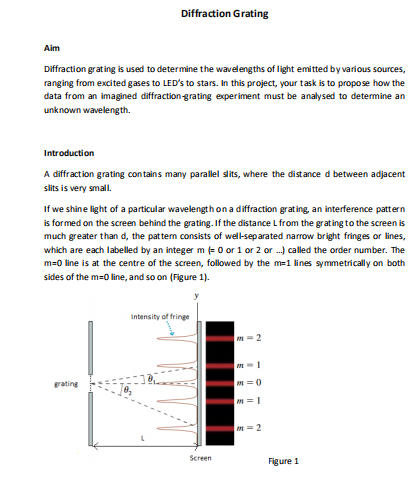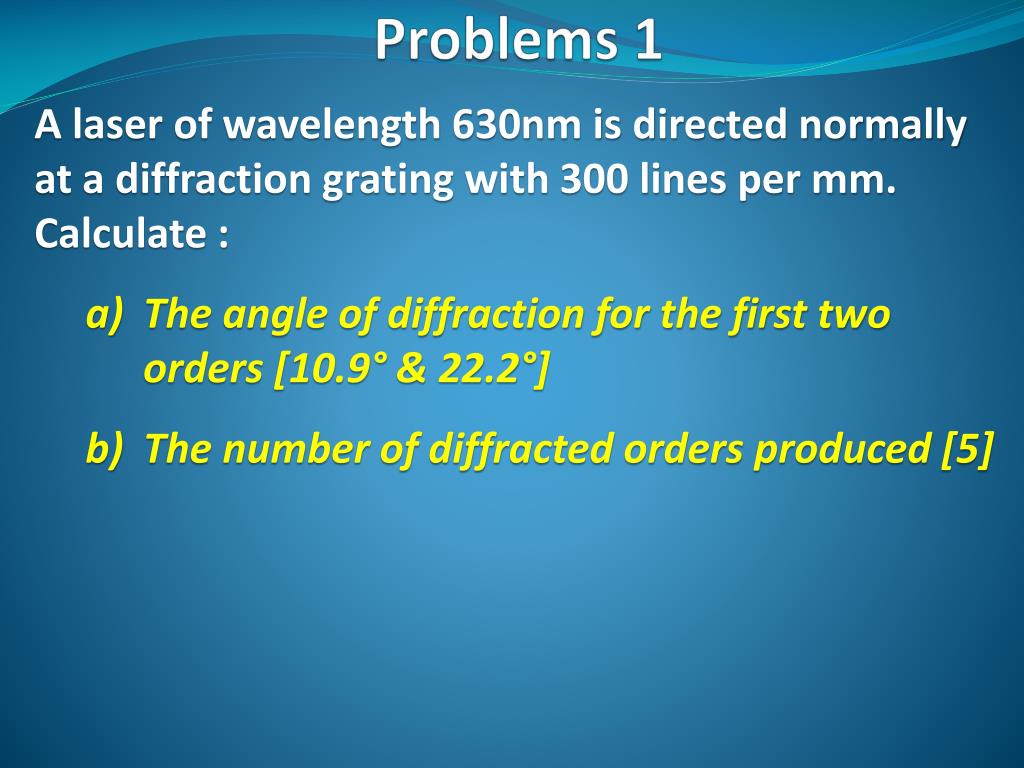
I am now in the process of playing with collimating lenses and reflectors, let me know if you would be interested in an instructable on this, and let me know what you thought about this quick instructable in the comments.
#DETERMINE WAVELENGTH USING DIFFRACTION GRATING FULL#
If you are interested to see the full set of results I have attached the excel file you can use to perform your own measurements. Even with some unaccounted error I believe this is a fair representation of the actual wavelengths and perfectly demonstrates the double slit experiment. measuring the distance to the screen not being perfectly perpendicular etc). I did not do a full uncertainty measurement but it is obvious there will be uncertainty introduced by the measurement techniques (i.e. The difference between the measured and expected was between 4% and 10%. Looking at the calculations, my measurements do not lie within the maximum and minimum bounds but they are at least consistent. These are maximum and minimum wavelengths which are indicated on the lasers themselves, so I knew approximately what the wavelength should be to see if I got the right answer. In the table you can see two rows (min and max). I repeated this experiment for this instructable to produce the graph above.

Wavelength is usually expressed nano meters (10^-9 m) so you will need to consider if you want to convert your answer to nano-meters or simply express is a something times 10^-9. Remember that all these distances are in meters.

Together with x and d we can now calculate wavelength.

If we divide 1m by 500,000 lines, we get the distance between them which is 2 µm. Well, if we know the grating has 500 'lines' per mm, that means there are 500,000 lines per m. All of this is available for you to substitute into the equation to give you the wavelength.īut you might ask "how do I know what 'a' is?". This is because I did this a few times to determine uncertainty in the measurement).īut how does this relate to wavelength? The equation is lambda = (a * x) / d, where 'lambda' is the wavelength in meters, 'a' is the distance between the slits in the diffraction grating, 'x' is the fringe separation, and 'd' is the distance between the screen and the grating. (You'll notice that there is a discrepancy between the picture and what I have recorded in my results later.



 0 kommentar(er)
0 kommentar(er)
